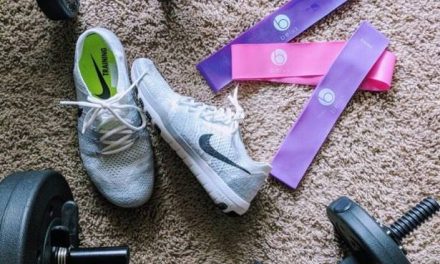One of the common goals for women working out is to get rid of cellulite (and prevent it if they don’t have any). It’s the unwanted, hideous dimpled lumpy skin you find on the back of your thighs and butt that affects 90% of women. But before you try to purchase products targeted to get rid of this fat, get to know how cellulite forms within our body.

A History Lesson
Society today deems cellulite as a blemish of beauty and health. But that wasn’t always a case, as older times in Europe treated it as if it were a blessing.
During the Victorian era, heavier women were the muses of the artists at that time. A lot of nude paintings depicted women with cellulite prominent on thighs and hips. The reasoning behind this was that the more cellulite a woman had, the wealthier and prettier she was. After all, living a sedentary life and eating fatty foods was their definition of privilege back then. The bigger the thighs, the higher the status of wealth.
But What About Men?
Although men have cellulite too, it is not much of an issue with them. Sexist as it may seem, it’s no big deal because they don’t have the same amount of estrogen. This all comes down to fat cell storage and development during puberty. During puberty, the fat cells’ growth goes in different ways with both sexes. Men’s fat cells get smaller while their midsection cells grow bigger. Meanwhile, women’s fat cells in the lower body get bigger. The high levels of estrogen cause the female body to carry twice the amount of fat the male body does, hence the fat being on top of the muscle and underneath the layer of the skin.
Predetermined Factors
Genetics also play a huge part in creating the cellulite in the body. When women have cellulite, two genes are found in their body: Angiotensin Converting Enzyme and H1F1A. They affect blood flow in the fatty tissues underneath the skin–an organ whose condition plays a big role in cellulite formation.
Skin Breakdown
Cellulite manifests in our largest body organ–the skin. Even if the skin is made up of many layers, it is where the fat stores up to sag on the outside. Let’s take a look at the two major layers of the skin–the epidermis and the dermis–and dig into the sublayers that make it.
The Epidermis
The layer of the skin that we can feel and see is the epidermis. Its main job is to shield the lower layers and our organs from external environments. There are 5 sublayers making up the epidermis:
- Stratum corneum: outermost layer with a waterproof surface
- Stratum lucidem: thin protective layer found on thicker areas of the skin such as on the soles of our feet and the palms of our hands
- Stratum granulosum: three to four layers containing keratohyalin, the protein that strengthens our skin
- Stratum spinosum: layer where keratin is produced and cells are able to change shape from columnar to polygonal
- Stratum basale: deepest layer where skin cells actively divide
So mostly, the epidermis is the surface of our skin. Although this is where we see cellulite, the unwanted fat forms on the layer underneath it–the dermis.
The Dermis
Below the epidermis is the dermis, which is thicker and makes up majority of the skin. Think of this as the storage space for the integumentary system. It holds the blood vessels, connective tissues, nerves, glands, and hair follicles. But it is also in the dermis where the key substances of cellulite formation is located. These are collagen, elastin, and the subcutaneous fat layers.
In the dermis, collagen and elastin hold the skin together. Elastin keeps the skin strong and stretchy. Collagen is the substance keeping skin tight to prevent sagging.
The subcutaneous fat of the body is found in the dermis as well. Subcutaneous fat includes normal fat, fascia fat, and subdermal fat. Subdermal fat is the type of fat that builds cellulite. Too much subcutaneous fat causes the subdermal fat to squeeze itself and manifest as cellulite.
So What Exactly Is Cellulite?
More commonly found in women than men, cellulite is the excess fat stretching the skin in our thighs and butt. It may also be genetically determined, although taking in fatty foods can pile up the subcutaneous fat under our body enough to form the cellulite. So cellulite doesn’t exactly come out of nowhere, but it is not as permanent as we think. With some lifestyle changes and proper exercise, we can get rid of the unwanted sag that hinders the perfect butt.
What’s Next?
[hoops name=”action”]





